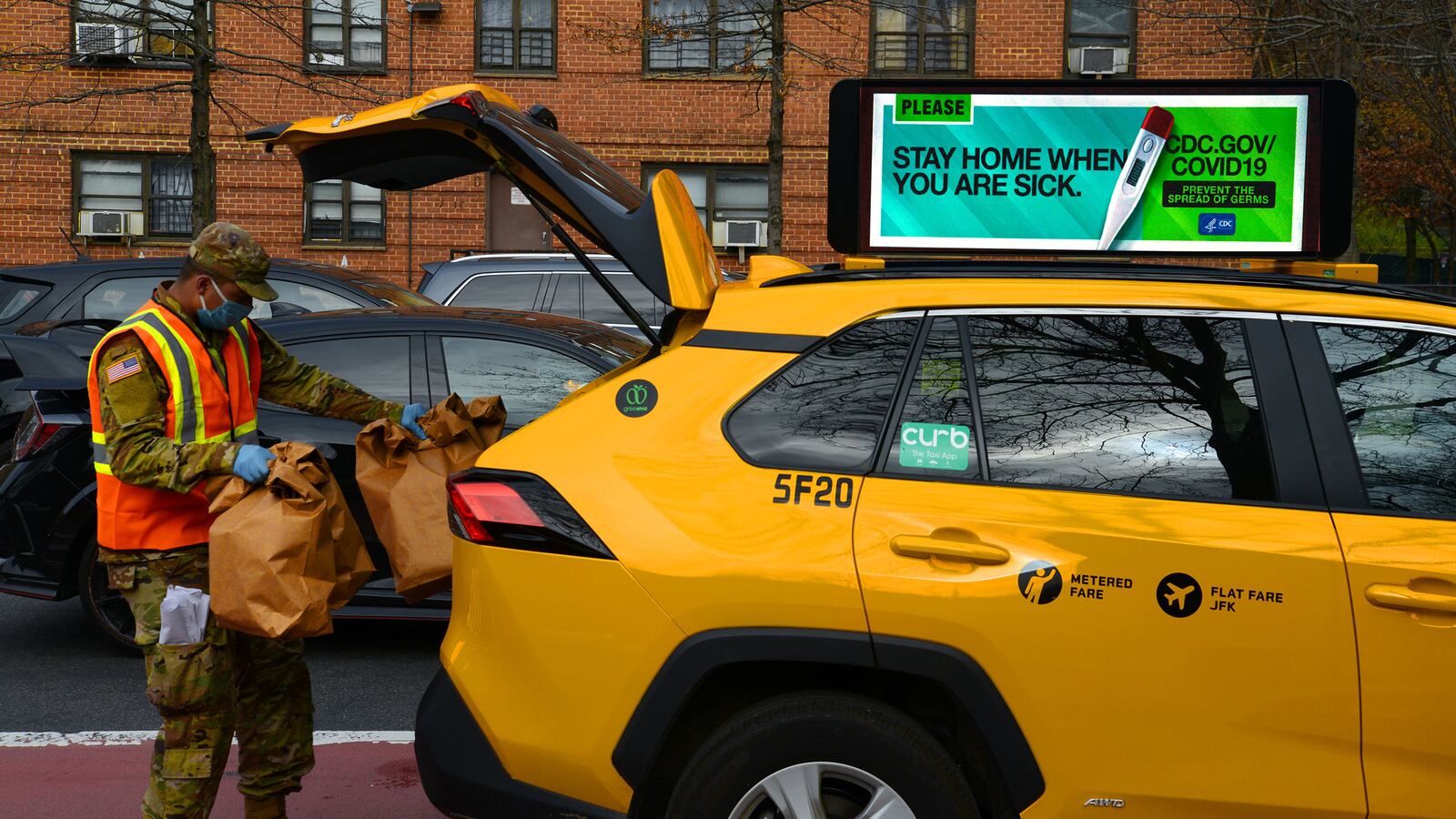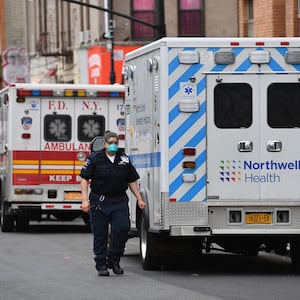As the novel coronavirus continues to surge across the United States, and stay-at-home orders keep millions of Americans in relative isolation, basic sustenance has become a topic of intense moral and biological dread.
At least when it comes to food itself, experts have so far suggested there is relatively little to be worried about.
“The risk of contracting coronavirus through food is extremely small,” Martin Wiedmann, a professor of food safety in the Department of Food Science at Cornell University, told The Daily Beast.
According to the Food and Drug Administration and the Centers for Disease Control and Prevention, there is no evidence that suggests the virus can be transmitted through food, though the risk may not be zero. “There is currently little scientific information about the survival of the COVID-19 on the surface of open food,” the FDA has said. “Work with similar viruses shows that some food surfaces don’t allow the virus to survive at all, but some do.”
The dangers when it comes to food and how we obtain it during a pandemic, most experts contend, are highest for delivery workers, restaurant employees, and individuals who are continuing their jobs working for grocery services like Instacart and Amazon. Also, those working throughout the supply chain, from agriculture to meat-packing. Illness and, in some cases, death have begun to emerge in these industries.
Not that this is necessarily how regular Americans are viewing it.
“It is important that people ordering food take care of themselves but also take care of the people who are putting themselves at risk,” said Kristen Gibson, an associate professor at the University of Arkansas Systems Division of Agriculture.
Still, the FDA has issued a reminder to those in the food supply chain industry about proper hygiene practices, including washing hands and disinfecting surfaces regularly to minimize risk, and health experts maintain the responsibility lies chiefly with restaurants and suppliers.
As for individuals and families, Gibson said that while “preparing food at home is the safest option,” ordering out is by no means an excessive risk if residents follow federal social distancing guidelines and continue to use the same food preparation rules that are normally encouraged.
“Social distancing is the most important thing to remember when ordering out. Six feet or more from the person that has your order, even if you have a mask,” Wiedmann added. “Some people might then say that because they have a mask and gloves they can go closer, but refrain.”
Once the delivery arrives, avoid meeting the food courier in person—to protect both parties. While several apps have added options that limit in-person contact, restaurants will always take requests on how food should be left.
On that note, experts and advocates tend to argue it is always better for the business in question to order directly from the restaurant or grocery store. To avoid giving cash that could involve direct contact, try to tip—generously—electronically or over the phone.
“Think about it this way. By going directly to the source—your favorite restaurant—you're directly giving money to the chefs, delivery workers, and employees that need it most,” Jeff Schlegelmilch, deputy director of the National Center for Disaster Preparedness at Columbia University, told The Daily Beast. “Most restaurants also have an employee relief fund if you just want to support your favorite businesses that are the best and most direct way to help.”
While federal health officials are not too worried about transmission through food, two studies published within the last month have pointed to the potential for the novel coronavirus to linger on various surfaces. Much remains unknown here, but once the food delivery (or grocery delivery) is picked up, Wiedmann suggests the first thing any resident should do is “wash their hands.”
“Avoid touching your face, avoid touching any surfaces until after you have cleaned your hands,” he said.
Gibson also suggested putting the delivery order onto a hard surface, like a countertop, that can be cleaned easily and allows people to wash their hands immediately and take out food from packages without further contamination.
“I think it’s always a good idea to wipe down your countertops and wherever you put your groceries,” Gibson said. “People also seem to be taking extra measures that might make them feel better, like immediately throwing away or disinfecting food packaging.”
After cleaning or removing the packaging, Gibson stressed residents must “wash and or sanitize your hands before sitting down to eat.” It is also important to clean and sanitize any of the surfaces that came in contact with the food packages.
Wiedmann, however, did not recommend that individuals disinfect food, and even raised questions about being very aggressive in attempts to purge packaging.
“As long people don’t eat the pizza in the car on the way home without washing their hands, I wouldn’t recommend putting harsh disinfectants on the box,” he said.
In addition to new safety precautions that should be taken when receiving food, health experts say residents should be careful about the temperature food is held in during transport.
The CDC recommends that, before ordering meal kit or food delivery services, individuals “research companies and call customer service to ask about food safety standards,” particularly if the food is being delivered “at an unsafe temperature.”
While the virus might not be spread through food, health officials have urged extra vigilance over potential food poisoning—or anything that might lower the immune system and force residents to go to a hospital teeming with the virus.
That being said, Ben Chapman, a professor and food safety specialist at North Carolina State University, told The Daily Beast that the food safety industry has not changed basic guidelines to combat this virus.
“Because food is not identified as a risk factor, and we don’t expect it to be, it doesn’t lend itself to change what we are doing,” Chapman explained. “So cooking temperatures haven’t changed, general protocol hasn’t changed, and we are really still focused on hygiene and food safety all the time. The difference is, the food business has changed, since the economic model has changed.”
Chapman joined the coterie of experts we canvassed in arguing that other than focusing on hand washing and hand sanitizing more regularly, there should not be any major fear around ordering food in from restaurants or having your groceries delivered.
“I think the rule of thumb is, every time you touched something that could have been exposed to the virus recently, wash your hands,” Chapman said.
Gibson reiterated that people should wash hands before and after coming in contact with food delivery services or workers, any outside food or packaging, or even—and perhaps especially—coming back from the grocery store.
“The virus will die off quickly outside of its host, and so using precautionary measures will only help your piece of mind and further protect yourself,” she said.








